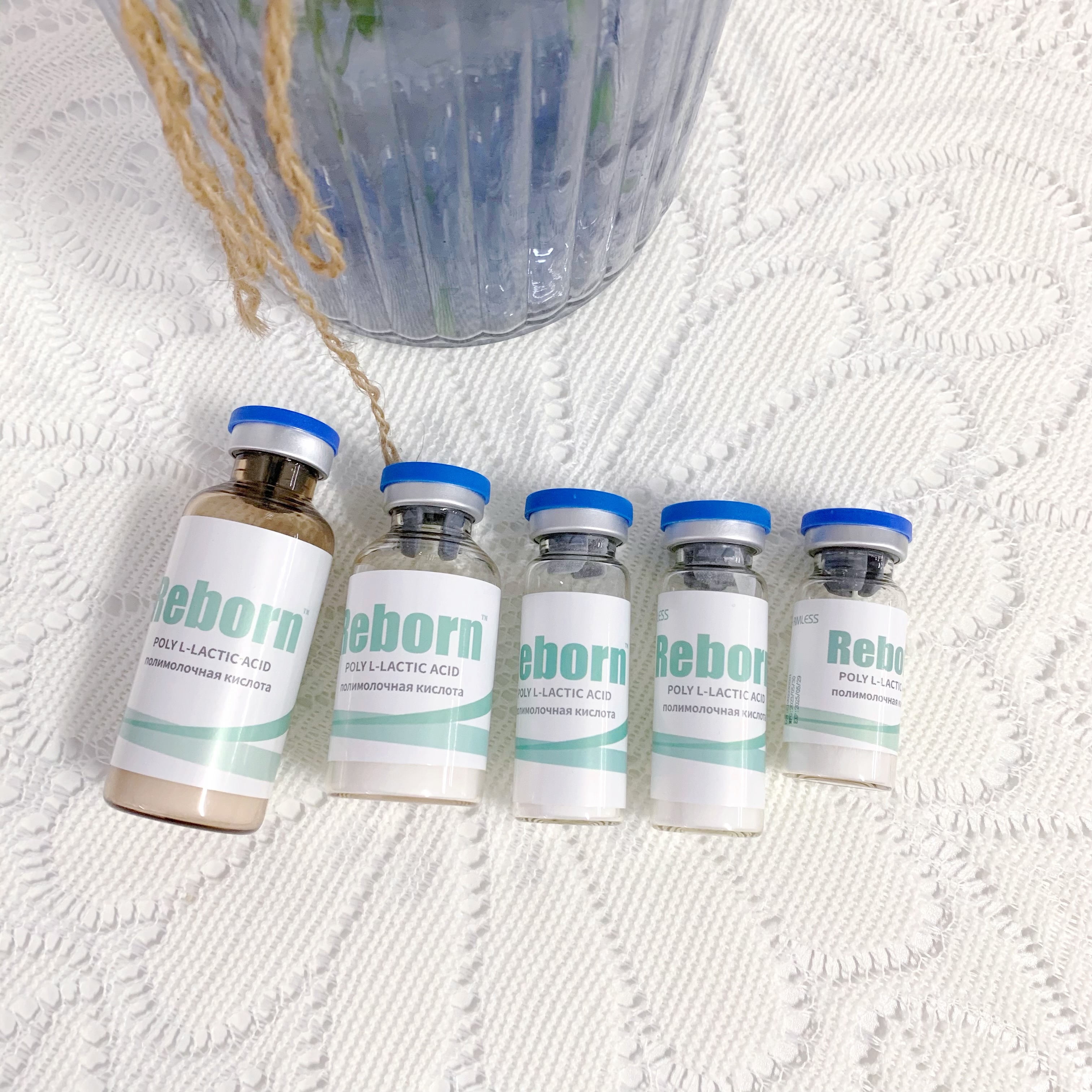Skin rejuvenation is a nonsurgical procedure that can help you look as vibrant as you feel, and it doesn't require the time and risks associated with traditional cosmetic surgery. Skin Rejuvenation Treatments are one of the best ways to invest in the health of your skin. Treatments provide both prevention against the factors affecting aging as well as treatment for fine lines, wrinkles, pigment, redness, volume loss, and laxity. Poly-l-lactic acid(PLLA) can stimulate the regeneration of autologous collagen to get natural effect. Reborn PLLA Filler is a best way for Skin Rejuvenation Treatments. We have Reborn PLLA Dermal Filler and Reborn PLLA Hydrogel. Reborn plla dermal filler motivate the body to create its own natural collagen and restore your face to a more natural, youthful appearance. It is manly for volumes and deep wrinkles. 5 contents: 150mg/vial,240mg/vial,360mg/vial,500mg/vial,800mg/vial. Reborn plla hydrogel filler is for fine wrinkles and facial texture improvement. 1 Content: 5ml/vial Skin Rejuvenation Treatment,Neck Filler,Dermal Fillers Injection Techniques,Dermal Fillers for Hyaluron Pen,Non Surgical Filler for Skin Rejuvenation Rimless Industry Co.,Ltd. , https://www.rebornplla.com
What do you know about composite packaging?
ã€Chinese Packaging Network News】Compound packaging is a type of packaging that combines the best features of various materials into one, offering cost-effectiveness and attractive printing. It has multiple advantages such as anti-static, UV resistance, moisture and oxygen barrier, cold and oil resistance, high-temperature tolerance, easy sealing, and long-term preservation. What are the commonly used composite packaging materials?
1. Anti-corrosion compound packaging material involves using preservatives as a coating on the middle layer of the material. The base is kraft paper, with a layer of wax and two additional layers containing wax or asphalt, along with added preservatives that release slowly. This material is often made into bags for metal products, where the preservatives can be filled in the enclosed space. A thin protective film forms on the metal surface, effectively preventing corrosion.
2. Oil-resistant composite packaging material consists of two plastic films. The outer layer is a high-density polyethylene film with special structure and properties, while the inner layer is a thin, tough, non-toxic, and transparent film. When used to package meat, it prevents oil and blood leakage, avoids sticking, and maintains the original color, smell, and taste of the meat without forming a crust on the surface.
3. Fresh-keeping compound packaging material is made from gelatin, potato starch, and edible salt. Known as an artificial "peel," it is used to store vegetables, fruits, and eggs, extending their shelf life by more than four times.
4. The fourth-generation paper composite packaging material is made from 40% talcum powder and 60% polypropylene, creating a material that resembles paper but is much stronger. It is heat-sealable, highly moisture-resistant, dimensionally stable, foldable, and easy to print various patterns.
5. Calcium-plastic material is a composite made from synthetic resin with fillers. It is widely used in making calcium plastic corrugated boxes and containers. These offer better mechanical strength and moisture resistance compared to traditional corrugated cardboard, with an attractive white appearance and vibrant printing. The containers are produced via blow molding, offering high strength, corrosion resistance, and low cost.
6. FRP (Fiber Reinforced Plastic) is a polymer composite known for its high strength-to-weight ratio, impact resistance, crack resistance, toughness, light weight, and corrosion resistance. It is easy to process and can be tailored for specific needs. FRP is used in manufacturing packaging boxes, industrial transfer trays, containers, and even gas cylinders for oxygen, nitrogen, and acetylene, as well as chemical and fertilizer packaging barrels.
7. Wood-plastic composites are made from waste wood and plastic. Half of the raw material comes from sawdust and waste plastic, which are melted and extruded into sheets. This material offers better mechanical strength than wood, is resistant to water and corrosion, and is cost-effective. It can replace wooden crates in packaging.
8. Plastic nonwovens are non-textile composite materials made from plastic filaments and laminated through heat and pressure. They have a strong cross-latitude structure, excellent strength, and uniform performance. They are lightweight, soft, smooth, waterproof, chemically stable, and safe for food contact. They are widely used in packaging for cement, pesticides, fertilizers, feed, and fresh produce. However, they have poor heat resistance due to their material properties.
In conclusion, while there are many types of composite packaging materials available, choosing the right one based on the application ensures optimal performance. Composite packaging continues to play a vital role in the evolving packaging industry.